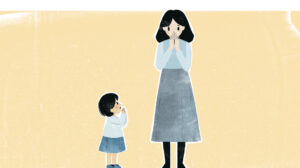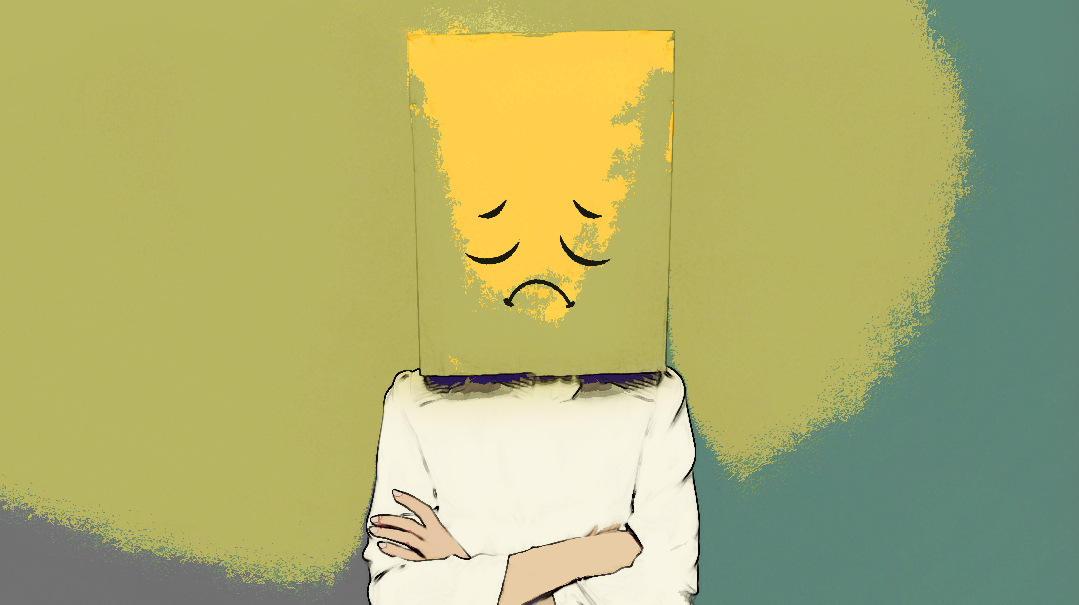All in the Family
| January 29, 2020This family seems so fractured. Can they tap into the love beneath the pain?

Presenting Problem: Leah and Yehuda are at a loss over how to deal with their daughter’s difficult behavior.
Tools Used: Structural family therapy
I’d seen “Unknown Caller” on my caller ID for several weeks, but it was never followed with a message. I assumed it was a telemarketer, or a distressed potential client, who wasn’t entirely sure she was ready to commit enough to leave a message.
One day, the caller finally left a message, and the latter proved to be true.
The message was brief and stilted, something about wanting help for her daughter. I called back. I did a quick intake over the phone with Leah, and ascertained that she was under heavy pressure from her daughter’s school to find support for her daughter — or else.
I explained to Leah that I don’t generally see adolescents, as my practice focuses primarily on adults and couples. However, I could see her daughter as part of a family therapy structure.
Leah hesitated. I heard her exhale. “That’s what the principal actually suggested,” she tentatively offered. “This is my fourth daughter in the school, all of whom have struggled. Not as badly as Shevy, but the principal insists we try something different.” We set up an appointment for the following week with either Leah alone or together with her husband.
The Issue
Leah and Yehuda came into session bringing with them a heavy energy. They spoke little as they arranged themselves on the couch. Leah looked at her husband pleadingly.
“Welcome to both of you. It’s clear you care about your daughter and would like some support with her behavior in school.”
“Her behavior in general.” Yehuda was looking around the room, uneasy.
“Shevy’s behavior would be on the normal end of teenage rebelliousness if it wasn’t for school, I think,” Leah interjected. I thought I detected a slight eye roll from Yehuda. There wasn’t outright hostility between the couple. However, their body language and tone indicated they were on separate pages when it came to their daughter’s behavior.
“Okay, well, before we determine that, let’s back up a bit. May I ask you some more general questions about who’s in your family to get a bigger picture?”
Leah and Yehuda both nodded, and I was struck by how they were mirroring each other: their mouths in straight, tight lines and their brows creased. “So, what would you like me to know about your family?”
“We have eight children. Six girls and two boys. The oldest is 19 and the youngest is 3.”
“Wow, beautiful. What’s the order, names, and specific ages?” I started to sketch. “I’m just drawing a visual sort of map of your family called a genogram. This shows me the family really quickly, and is useful to reference who’s who. I’m placing you — Leah and Yehuda — in the middle, and I’ll write your kids names below. As we go along, I can add anecdotes or notations to this genogram to help contextualize the family.”
“Okay. Esty is 19, Rivky is 18, Sarala is 16, Shevy is 14, Dovid is 12, Rochie is 9, Shmuly is 6, and Rina is 3,” Yehuda offered.
“Great, thank you. Is there anything you think I should know off the bat about any of the kids? Like unusual or important dynamics?”
Leah looked over at Yehuda cautiously. “Well, Esty struggled for a couple of years with a minor eating disorder. She wasn’t hospitalized or anything, but we spent a good couple of years busy with that. Sarala has some sort of processing disorder. We don’t really know what, but she’s struggled academically for years. And I’m pretty sure Shmuly has ADHD, but Yehuda just thinks I’m looking for problems.”
“I think Shmuly is six and an active boy who just started first grade. I think he’s too young for us to make any judgments.” Yehuda sounded weary.
“Right.” I validated. “Six is young, but Shmuly is lucky to have a mom who is so attuned to his behavior in case some early intervention is needed. The transition from kindergarten to first grade is a big one, too.
“You said that Esty struggled, past tense. Where is she at now with her eating disorder?”
“Well, I suppose it never just goes away. I’m still worried about her. But her weight has been stable for two years now. We were fortunate that we could send her to a small, nurturing seminary in Eretz Yisrael, with experience dealing with cases like hers, so that was a huge brachah. She’s currently working in a preschool and is in shidduchim.”
I nodded and regarded Leah and Yehuda. They seemed a little more at ease, but the tension was still present.
“Okay, so about Shevy. Can you tell me what’s been going on with her?”
Leah and Yehuda both started to speak at the same time. Leah deferred to her husband.
“She’s angry a lot of the time. She doesn’t do her schoolwork, and she rarely helps out around the house. She spends most of her time with her friends, or with headphones in her ears. She’s failing most subjects, but doesn’t seem to care, and when the school tries to enforce their policies, she just outright ignores them.”
“Sounds like she’s having a hard time,” I offered.
Yehuda was incredulous. “She’s having a hard time?! She’s having fun. She’s doing exactly what she wants to do!”
“It’s Esty who’s having a hard time! Poor girl. She’s in shidduchim, and with her history, she needs a rebellious sister tarnishing everything like a hole in the head,” Leah burst out.
“I can hear why that would be anxiety-producing for you. Aside from general chutzpah and lack of regard for school, do you see anything else that concerns you?” I asked gently.
“Like a particular issue? Something as concrete as an eating disorder? No. But you should hear how she talks to us and her siblings. She’s completely out of control. She does and says whatever she wants. She even influences her older sisters, especially Sarala who is right above her. I think the younger ones are afraid of her.”
“I hear how that’s very distressing to deal with every day. What’s your main goal in coming here?” I ventured.
“Well, I have a feeling Leah just wants to get the school off our backs, but I’m seriously concerned.”
“Don’t make me sound like I don’t care about Shevy and her issues!” Leah retorted. “It’s just that we spent years of time, energy, and resources on a real problem for Esty! I don’t see why this has to be blown out of proportion.”
“Leah, do you think Shevy’s problematic behavior isn’t real?” I turned to Leah.
“What I meant was, it’s nothing tangible?” Leah responded. “I dunno, it’s just teenage stuff, no.”
“I’m not sure. I don’t think I could guess at what is motivating Shevy’s behavior right now. There could be a serious core, or maybe not. But I’d venture to say that Shevy isn’t happy acting the way she is.”
“She seems very smug actually,” Yehuda countered.
“Yes, she may feel like that, or it may be a defense mechanism, or maybe she’s gotten used to the negative attention,” I suggested. “But in her heart, I doubt she’s happy always being in trouble.”
“You’re probably right,” Leah said. She and Yehuda exchanged glances.
“You know, sometimes it’s hard to see the kid under all the tough stuff, especially if she’s acting aggressive or like she doesn’t care. We tend to want to protect others, like Esty in shidduchim with her fragile history, or the younger kids who may become influenced. But the fact is that under that tough facade is a 14-year-old girl who needs love, nurturance, and attention just as much as anyone.”
“I hear.” Yehuda nodded.
Leah looked down at her hands, her eyes misty with tears.
“Structural family therapy is a treatment that addresses patterns of interaction that create problems within families. It identifies family hierarchies, and looks at boundaries and subsystems or sub-relationships within the family unit. It’s a holistic approach that involves the whole family. Do you think your kids will join?”
“Well, maybe Esty. And I’m not sure if Shevy has to, according to her school. I know she doesn’t want to. It’ll be a battle to get her here.”
“A battle — for now — is okay. We can process that in session. Your kids don’t have to be thrilled to come, but it will be better and the treatment will be more effective. Bring whomever you can next week. I’ll explain this treatment model a little more, and depending on who comes, we’ll see how much we can go into it. How does that sound?”
“A bit scary.” Leah bit her lip. “What am I supposed to tell them? That our family is failing, and we all need therapy?”
“Do you feel like your family is failing, Leah?”
“I guess not failing. But it’s not working well. There’s conflict all the time, and Shevy is literally on the cusp of getting kicked out of school.”
“Do you think your kids are aware of the tension and stress?”
“How could they not be? They live in a battle zone,” Yehuda said, looking sad.
“So there’s a problem. Systems aren’t working well. Everyone is aware of the problem. How about reframing coming here as an opportunity to acknowledge what isn’t working and learn strategies so your family system can work and home can be a happier place to be?”
“It sounds good. I’ll try to present it to them like that,” Leah said and wearily reached for her pocketbook.
“The kids will probably pick up on your and Yehuda’s energy about this. If it seems catastrophic and embarrassing, then that’s how they’ll view it. If you’re more casual about it, then their anxiety will be manageable as well.”
Yehuda nodded and Leah looked miserable. We scheduled an appointment for the following week, and they got up to leave.
The Work
As the appointment approached, I was curious as to who would walk through the door. First came Yehuda, followed by three girls, and Leah behind them all. Yehuda tentatively smiled as I brought out more chairs and arranged them in a circle. Yehuda and Leah took their same places on the couch and two of the girls sat down on the chairs nearby. There was one who didn’t sit down. She had headphones in, her back turned to me, facing the door, arms crossed.
Shevy.
“Shevy, don’t be ridiculous. Come sit down right now.” Leah sounded irritated. I watched. Shevy made no movement to come closer.
“Shevy!” Yehuda’s voice was slightly raised. “Stop it and sit down.” The only response was the audible change of decibel of Shevy’s music. She was drowning everyone out.
“It’s okay,” I soothed. “Shevy doesn’t need to join us right now. She can take her space and time.”
“No, she can’t. We have to report to the school that she’s actually attending these sessions. We verified with the principal, and they really mean business.” Leah’s eyes were desperately searching Shevy’s turned back.
“Batsheva! Sit down right now or I’m going to rip those headphones out of your ears and throw them in the garbage!” Yehuda practically bellowed. Shevy’s sisters, silent until now, colored, looking mortified. Shevy turned around. Yehuda looked momentarily pleased until he was met with Shevy’s withering glance.
“I told you. I won’t talk with some random stranger about how crazy our family is.” And with that, Shevy turned on her heels and walked out the door.
Leah buried her face in her hands. The older-looking daughter, who I assumed was Esty, got up to chase Shevy, but Yehuda held her back. “You don’t always have to do that. Don’t run to make her feel better. Let her go.”
“I agree with your father,” I interjected. “Let Shevy go and cool off. Maybe she’ll come back today and maybe not. I’m so pleased to see you though. Esty? And? Rivka or Sarala?”
“Sarala,” she murmured, still looking like she wished the floor would swallow her whole.
“I need to see where she is,” Leah suddenly said, and angrily got up and walked out the door after Shevy.
“Well, this is embar—” Yehuda stopped himself, looking at his daughters. “Um, not how I thought it would go.”
“I understand that what just happened is distressing for all of you. However, from the therapeutic end, this is exactly what is supposed to happen.”
“What do you mean?” Yehuda asked cautiously.
“Well, we haven’t spent a lot of time discussing structural family therapy (SFT), but real-life interactions like this are actually the ideal. I want to wait until Leah is back to discuss it more. What do you think is happening out there?”
“Either they’re fighting or they’re not. Mommy will probably be back soon,” Esty mumbled. Sure enough, Leah walked back in, cheeks flushed.
“She’s walking back home. I didn’t want to make a scene on the street.” Leah sank back into the couch.
“Thank you!” Sarala burst out. “As if this isn’t bad enough, we don’t need to make it a public show.”
“I know, sweetie,” Leah soothed. “This is why we’re here, to hopefully stop these types of things from happening.”
“Leah, I don’t know why you chased her. I told Esty not to go….” Yehuda, though talking in a muted tone, sounded angry.
“I’m her mother, and I needed to see what she was going to do. If she was safe. I’m not a child, and I can make decisions as I see fit as an adult.”
Esty and Sarala exchanged desperate glances.
I chose to leave the adults’ discussion for now. “Leah, we were just talking about how what transpired, and even what’s happening now, is really essential and actually good for our therapeutic process.”
“How is that possible? The main subject of all of this isn’t here!”
“Well, yes, Shevy’s behaviors at school and her attitude at home certainly prompted your coming to session, but I bet there are larger family dynamics and relationships that Shevy just fits into. That’s the concept behind SFT. A child’s behavior is usually a result of certain family patterns or interactions.
“We’re going to look at the family structure as a whole, as well as everyone’s other, naturally occurring networks, like friends, extended family, school, work, etc., to identify areas of strength and weakness. Because the behavior of one family member can only be understood when examining the context in which it occurs.”
“Fine, but I can’t believe what she said, though, that our family is crazy!” Leah responded. “And that she has no shame to call you random in front of your face. You’d think she would care about making a normal impression.”
“Leah, I understand that what Shevy said and how she said it is upsetting. However, here the focus is much less on what’s said and more on how the interactions occur. Basically, less focus on content, more focus on process. When we look at the bigger picture — or the process — we can start to see patterns of interaction that are sort of universal in your family. These interactions are what we’re looking to change. So Esty, no pressure, but if you could, try to describe the process of what happened before.”
“Um, okay. Basically, we all came in, except for Shevy, who was being rude. Ma asked her to come, Shevy ignored her. Ta yelled at her, and Shevy left. I went to go make her feel better, Ta said no, and then Ma went to see where she went. And me and Sarala almost died of embarrassment in the meantime.”
“Wow! That’s amazing. Great summarizing, Esty. That’s exactly what’s meant by focusing on process — not the content, but the behaviors and general emotions. Just to go back to explain how we can make change, SFT uses three main techniques: working in the present, reframing, and working with boundaries and alliances. Some of the ways that we can work in the present in session is through enactment of typical situations at home. We actually didn’t even need to recreate something, because an authentic situation happened. So Esty just really beautifully ‘worked in the present’ by describing the process that went on.”
The Next Step
“I see,” Yehuda said. “So then we reframe that? What does that even mean?”
“Great question. Reframing is a tool for viewing negative and apparently ‘uncaring’ emotions as positive and caring ones.”
Leah was indignant. “Hold on,” she said. “There’s no way that we can pretend Shevy’s outburst was caring and positive.”
“You’re right. It’s not about pretending that behavior that was unacceptable is okay. It’s about looking at the core of the process. So for example, Yehuda, you were pretty angry.”
“Yes, I didn’t mean to have an outburst like that. It’s just that that’s how she acts all the time. And worse. I’m so tired of it.”
“Of course. I’m not criticizing your reaction. I was just naming your evident emotion. Were you angry?”
“Yes.”
“And where do you think that anger comes from?”
“Exhaustion?” Yehuda asked imploringly.
“Could be. But I’d venture to reframe that. What do you think if I’d say that your anger is more likely coming from love?”
Yehuda was silent, thinking. His wife and daughters were watching him closely.
“Maybe… I mean in the moment, I don’t feel an outpouring of love. But I suppose there are lots of different emotions — fear, sadness, and shame — but they all stem from the love I have for Shevy. I’m worried about her and what she’s doing to the family. I suppose if I didn’t love her, I wouldn’t care so much.”
“Exactly. It’s important never to justify anger in the name of love; the point of this intervention is to recognize the love underneath the pain and change how you react. And at the beginning, being able to name all those complex emotions is a wonderful place to start. There are probably a lot of different feelings that can happen simultaneously. It’s not about if they all feel positive or negative. Think of that more as the content, and the underlying impetus — in this case love and care — as the process. Can anyone else see the core of their motivations in what happened earlier?”
The girls looked down. “Leah?”
“Obviously, my going after Shevy was out of worry and care for her. I did want her to come back, and I did feel embarrassed, so I can’t say it wasn’t totally my motivation, but of course I wanted to know where she was going to be and if she would be safe.”
“Correct. Another response that comes out of love. Girls?”
“Well,” Esty started tentatively, “I wanted to go after Shevy. But I can’t say it’s because I cared about her. I’m actually pretty done with her behavior.”
“So what motivated you?”
“My parents. I guess it was out of love and care for them. I hate how she hurts them. I felt like maybe I could make it better.”
“So care was at the core. It’s not always about directing those feelings toward one particular person, it’s more about acknowledging that this family structure is often motivated by love and care, which is beautiful.”
Yehuda and Leah looked at each other meaningfully. I took that opportunity to move onward to the next stage.
“Esty and Sarala. We have a few minutes left, and I’d like to talk to your parents alone. Would you mind going to my waiting room, and then I’ll call you back for some closure?”
The girls looked grateful to have a breather and left the room quickly.
The Core
“The next part of SFT is about working with boundaries and alliances,” I explained to Leah and Yehuda. “While this is something we’ll look at in the whole family structure, it starts with the two of you. I’ve observed some frustration between the two of you over the fact that you aren’t always on the same page.” The couple nodded simultaneously.
“I’ve also noticed that you share the same goal of a peaceful home, that you care very much about all of your children, and you can both feel exhausted and overwhelmed with the circumstances.”
“Yes. That’s all true. Sometimes I feel very frustrated that Leah doesn’t take Shevy’s behaviors seriously enough or she just responds how she wants in the moment, which may be contradictory to how I would respond.”
“That does sound frustrating, Yehuda. When we feel charged with emotion, it’s really hard to step back and consider all of the different viewpoints and ways of reacting. Leah, how do you feel about what Yehuda shared?”
“I agree that we’re on different pages sometimes. Yehuda feels everything is a capital offense. As to reacting differently, I don’t know. It’s not like we have a system or something in place.”
“Excellent point, Leah! I think establishing a certain ‘response protocol’ would be really helpful. Something that you can compromise on and something that’s thought out before. I’m going to give you that for homework before next week. Can you sit together and identify some reoccurring behaviors of Shevy’s and concretize how you could both respond?”
“We could try.” Yehuda looked at Leah, who nodded in assent.
“There are many reasons why reestablishing alliances and boundaries is so important: Shevy will see you as a unified unit and know what to expect. Consistency is crucial for a sense of personal emotional safety. She won’t be able to play one against the other. You’ll both feel more supported and less isolated, and the other children may not feel as anxious about whatever is happening in the moment and feel like they have to fix it — as Esty demonstrated today. Sound good?”
“Yes,” Leah said. “We’ll work on this together for next week.”
“Great.” I opened the door and invited the girls back in. “As we wrap up, can someone share how they’re feeling?”
“I’m feeling hopeful. I like what you said about us being motivated by care and love.” Yehuda’s voice was steady as he spoke.
“I’m honestly still feeling overwhelmed, but definitely more positive than before,” Leah shared.
“I don’t know how I’m feeling. I kinda just want to go home,” Sarala ventured.
“Totally understandable. This was an intense session. Esty?”
“I think this process is interesting, I just don’t know if it’s going to work.”
“I hear that, Esty. There are a lot of different moving parts. Right now, it’s about committing to the process and seeing where it can take us.” Esty smiled slightly, and they all got up to leave. We booked a session for the following week.
I was curious to see who was going to attend. It would be ideal to have Shevy come back, but I had a feeling it would take a few weeks, or a serious threat from the school, until I saw her again.
Due to the fact that there seemed to be many different dynamics and a range of ages and needs in the family, it would probably take some time to see progress. I was confident, however, that due to Yehuda and Leah’s willingness and the openness of the children I’d met so far, that this family was going to be able to make real changes and start looking for solutions, communicating appropriately and sticking to boundaries, ultimately creating a safe and harmonious environment for everyone.
A continued, in-depth look into the family’s treatment with SFT will be explored in the next column.
Abby Delouya maintains a private practice in Montreal and works in schools as a youth and addictions counselor.
Disclaimer: This article is for psycho-educational purposes only, not diagnostic purposes, and does not serve as a replacement for individual therapy. Situations are a composite of people and situations and all identifying details have been changed.
(Originally featured in Family First, Issue 678)
Oops! We could not locate your form.












